This project investigates using bacteria pigments and natural dyes as alternative dyeing techniques for textiles. The aim is to reduce water usage and avoid toxic substances, offering a natural and biodegradable option for the fashion industry.
Skills • Scientific Research, Design of Experiments, Samples, Photography
Team • Eleonora Rombolà, Paula Camina Eiras
Partner(s) • MA Biodesign Central Saint Martins
This project investigated alternative dyeing techniques for the fashion industry, which nowadays is one of the most polluting and water consuming sectors, dispersing highly toxic substances in the environment and causing a dramatic impact. The project involved an initial phase exploring natural dyeing techniques from various organic sources, and a second phase investigating pigments produced by bacteria and its application on textiles.
1. Natural dyes
The project explored natural dyeing techniques for fashion, aiming to provide alternatives to polluting and toxic synthetic dyes. Five natural dyeing methods were tested on natural linen and synthetic rPET fabrics to compare the techniques on a natural and a synthetic fiber. The main focus and aims were to explore ways of dyeing that reduce water usage, avoide harmful substances, and improve biodegradability.
Each technique involved treating fabrics with a natural mordant before dyeing. The processes varied in ingredients, sustainability benefits, and temperature requirements. The experiments resulted in a diverse collection of colorful fabrics, with linen samples displaying brighter hues and rPET samples exhibiting more delicate shades, highlighting the unique outcomes of each fabric and dyeing method.
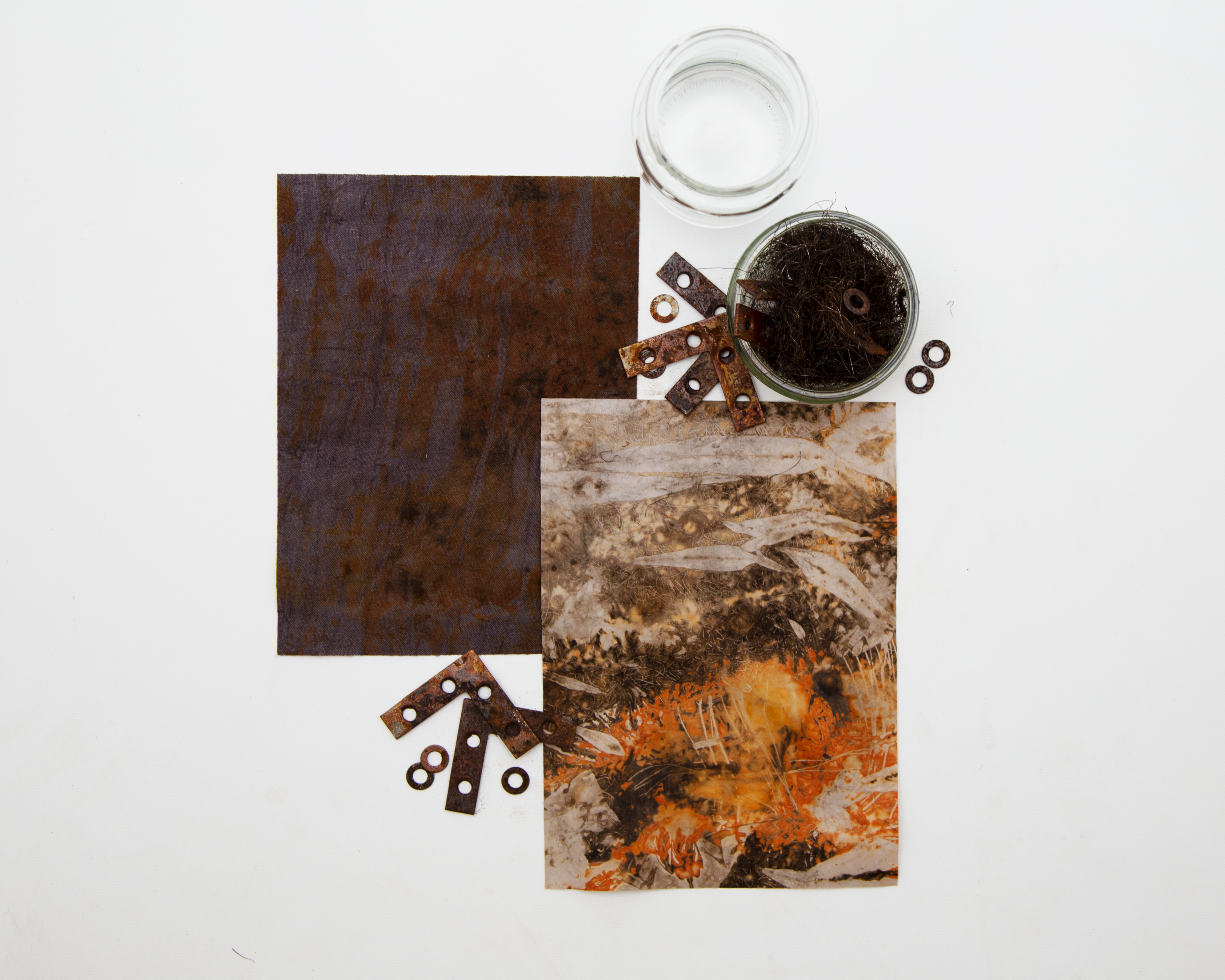
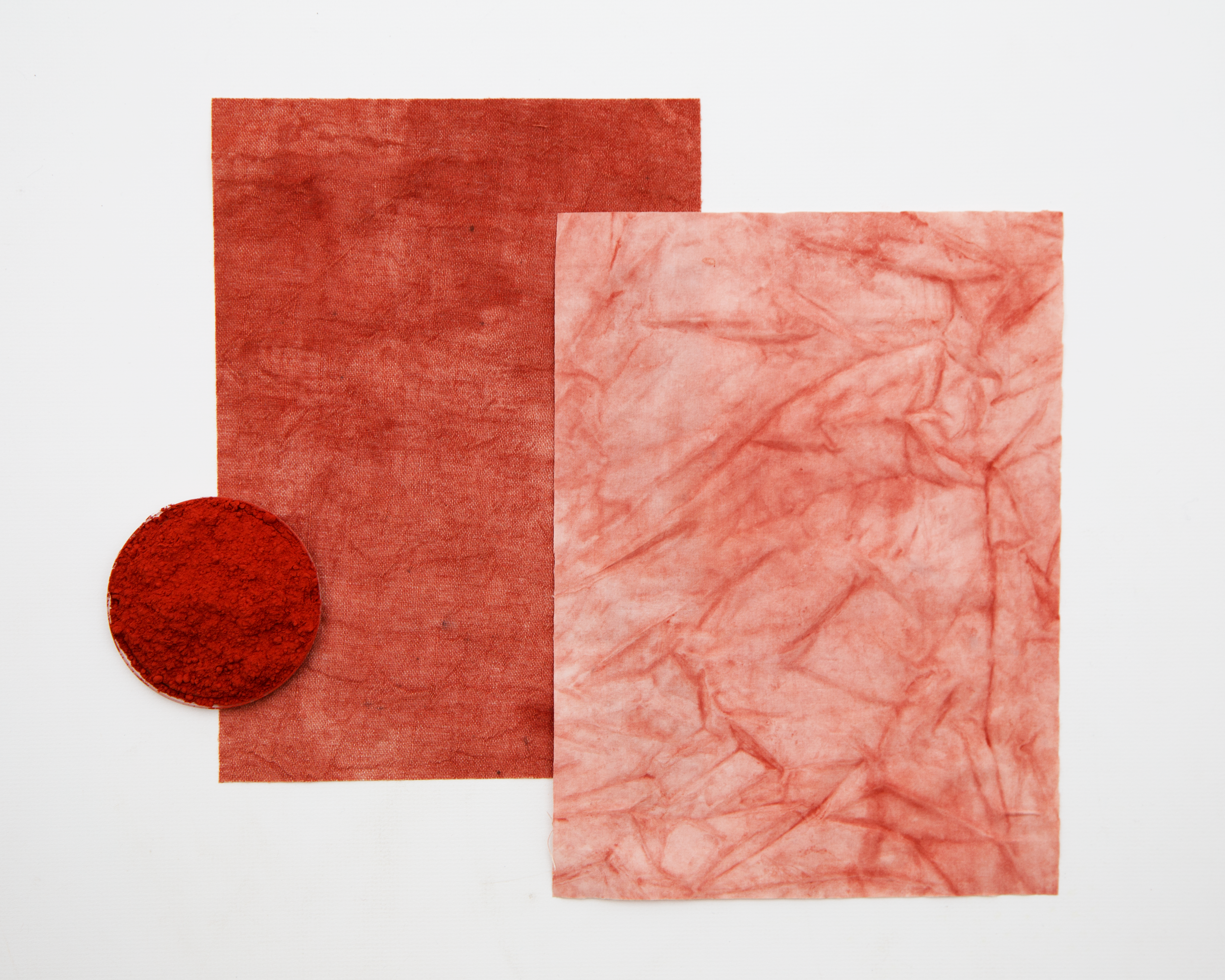
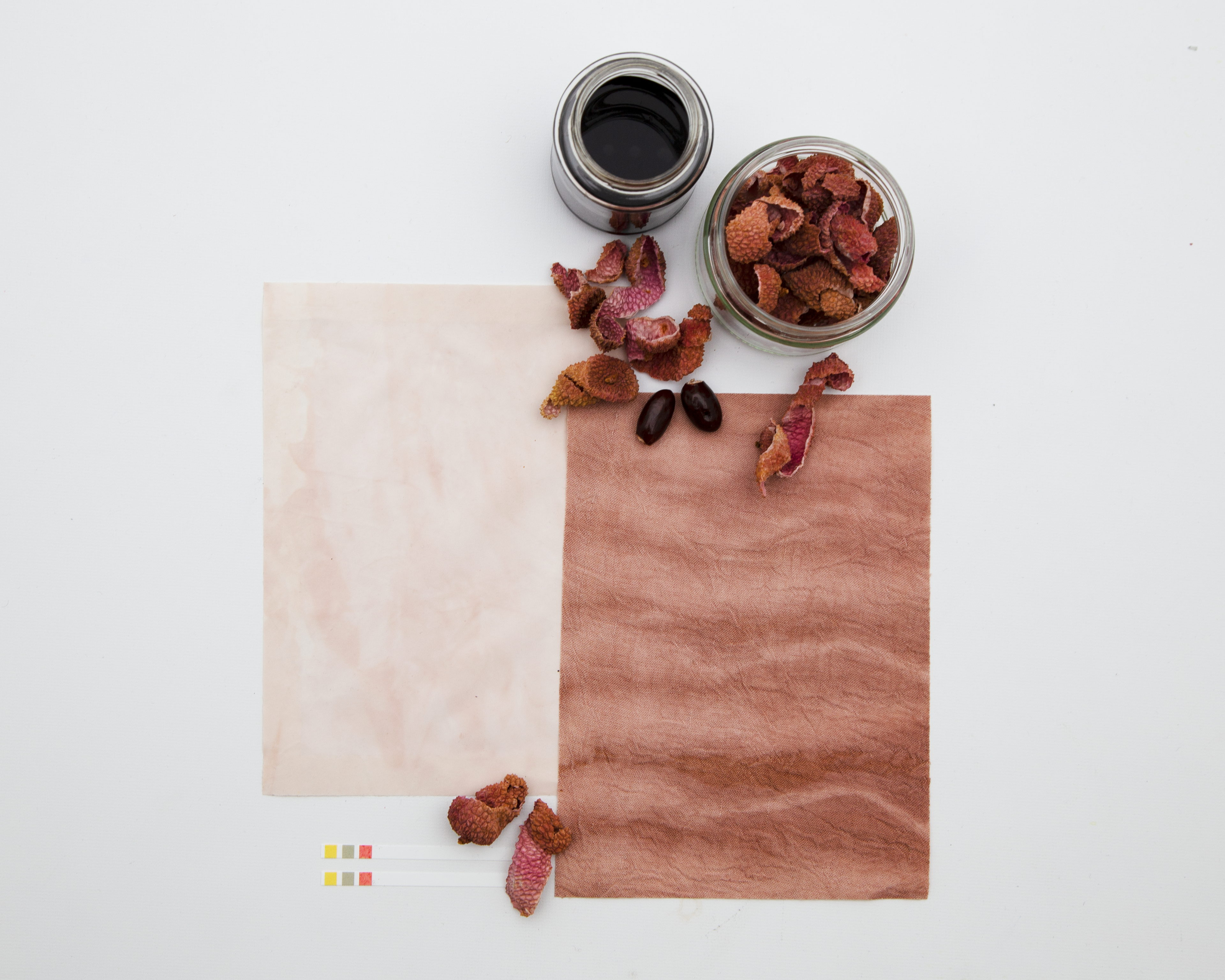
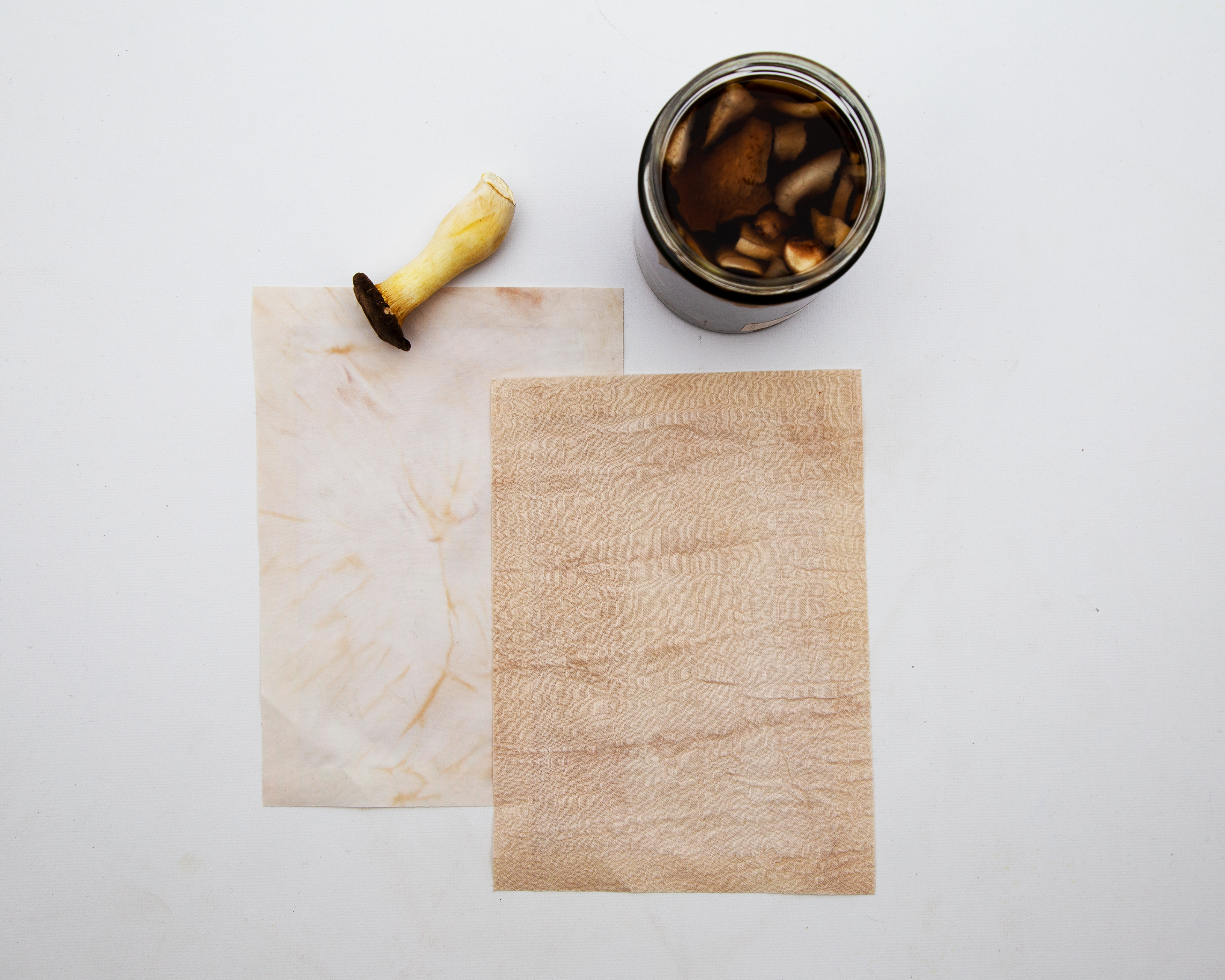
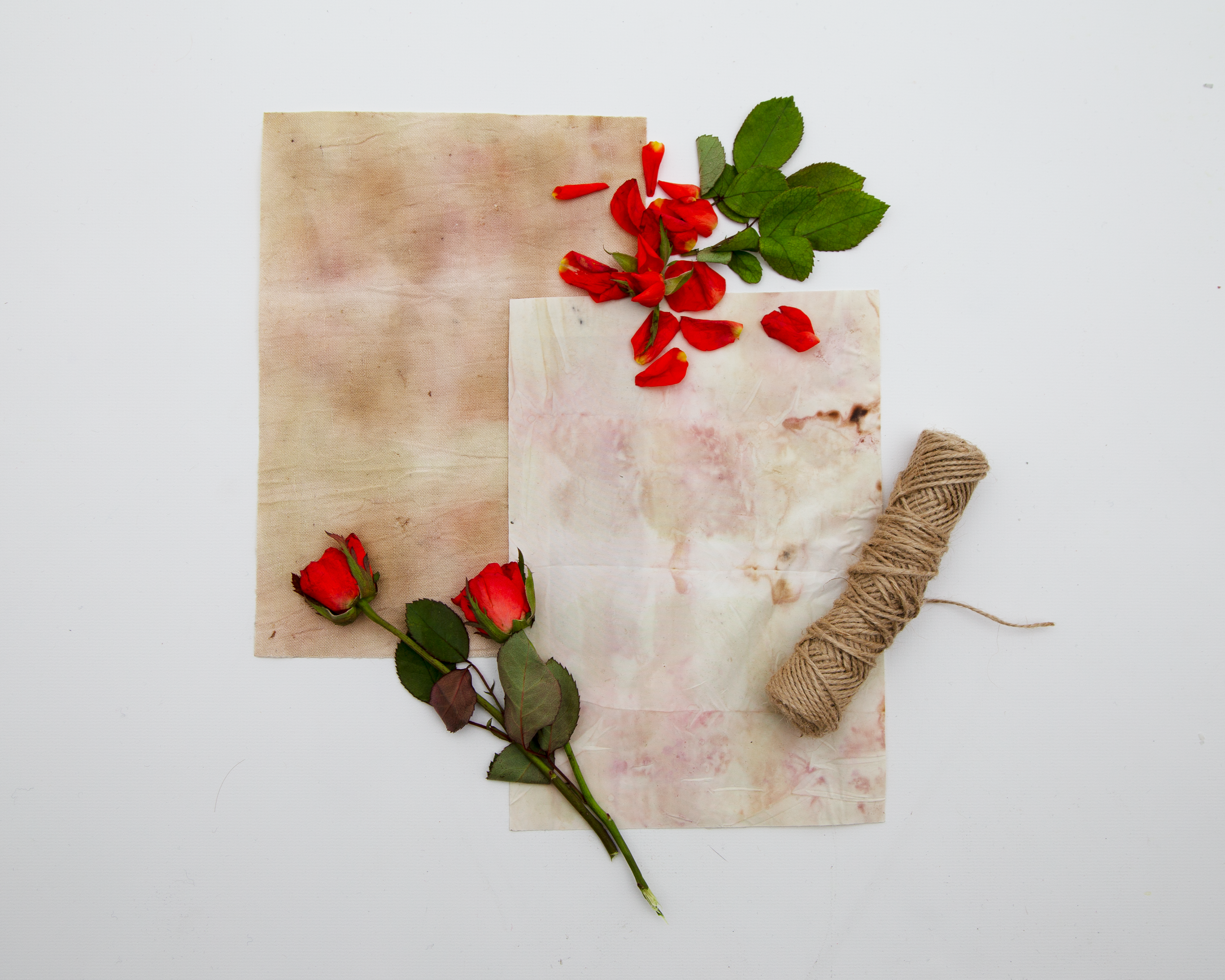
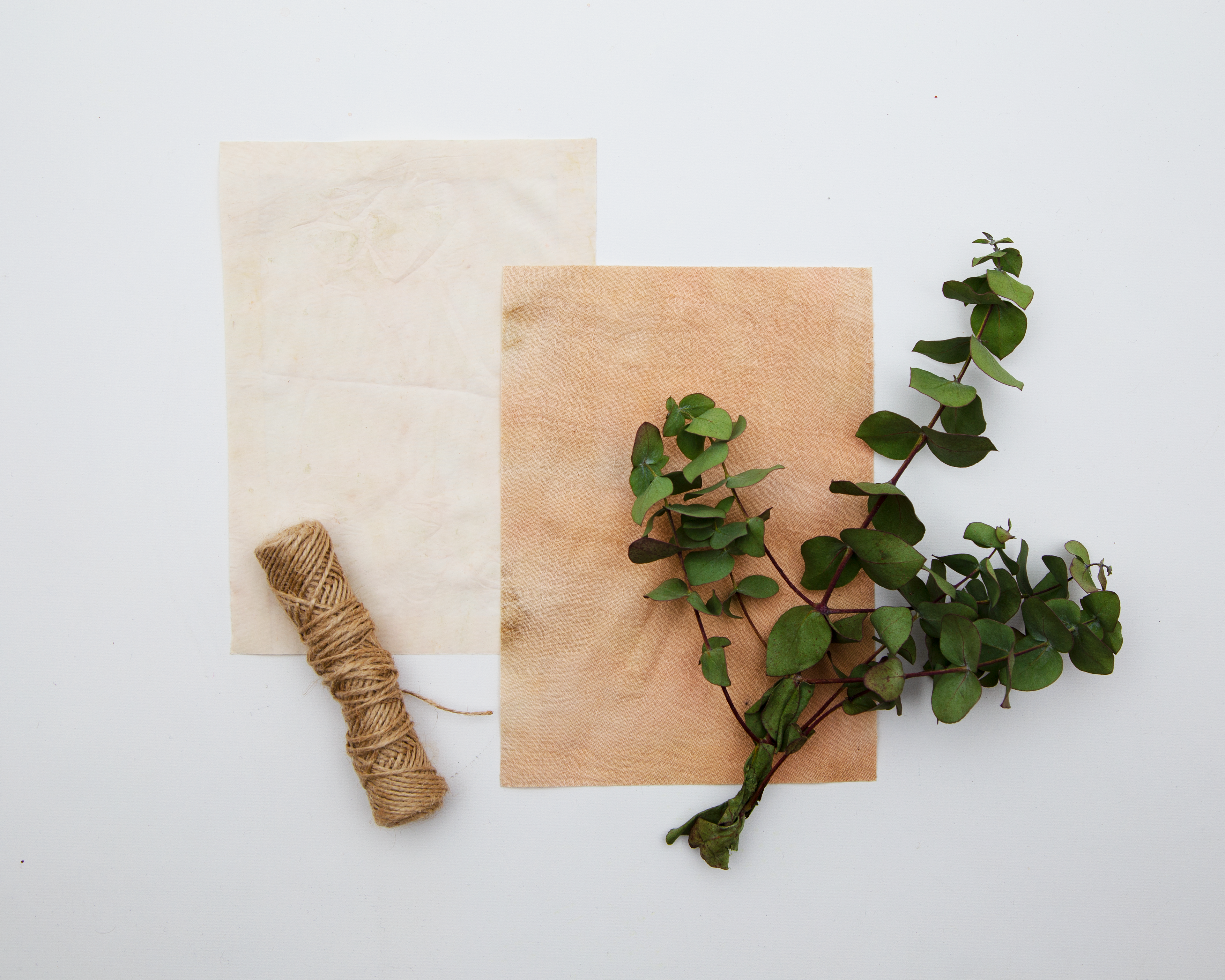
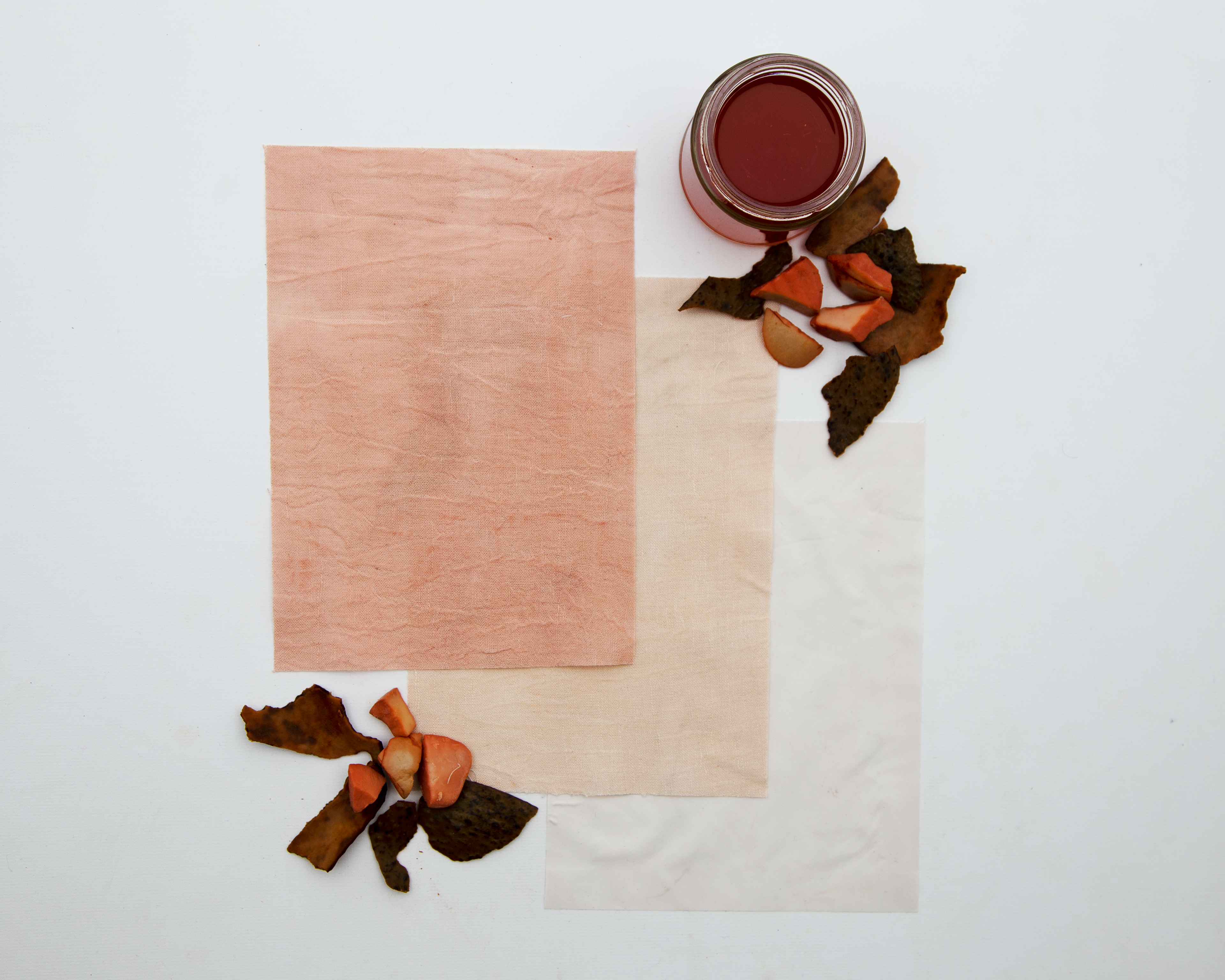
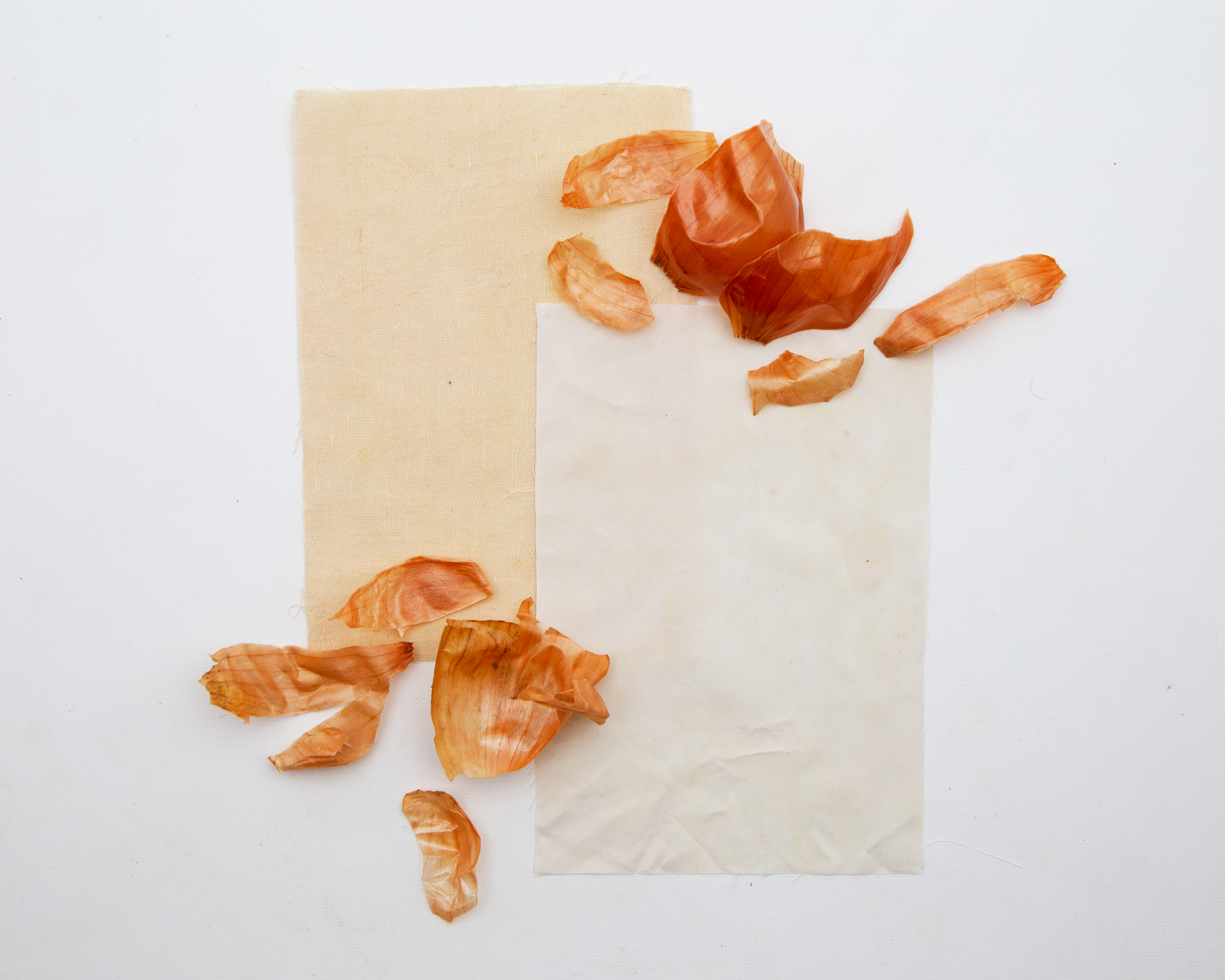
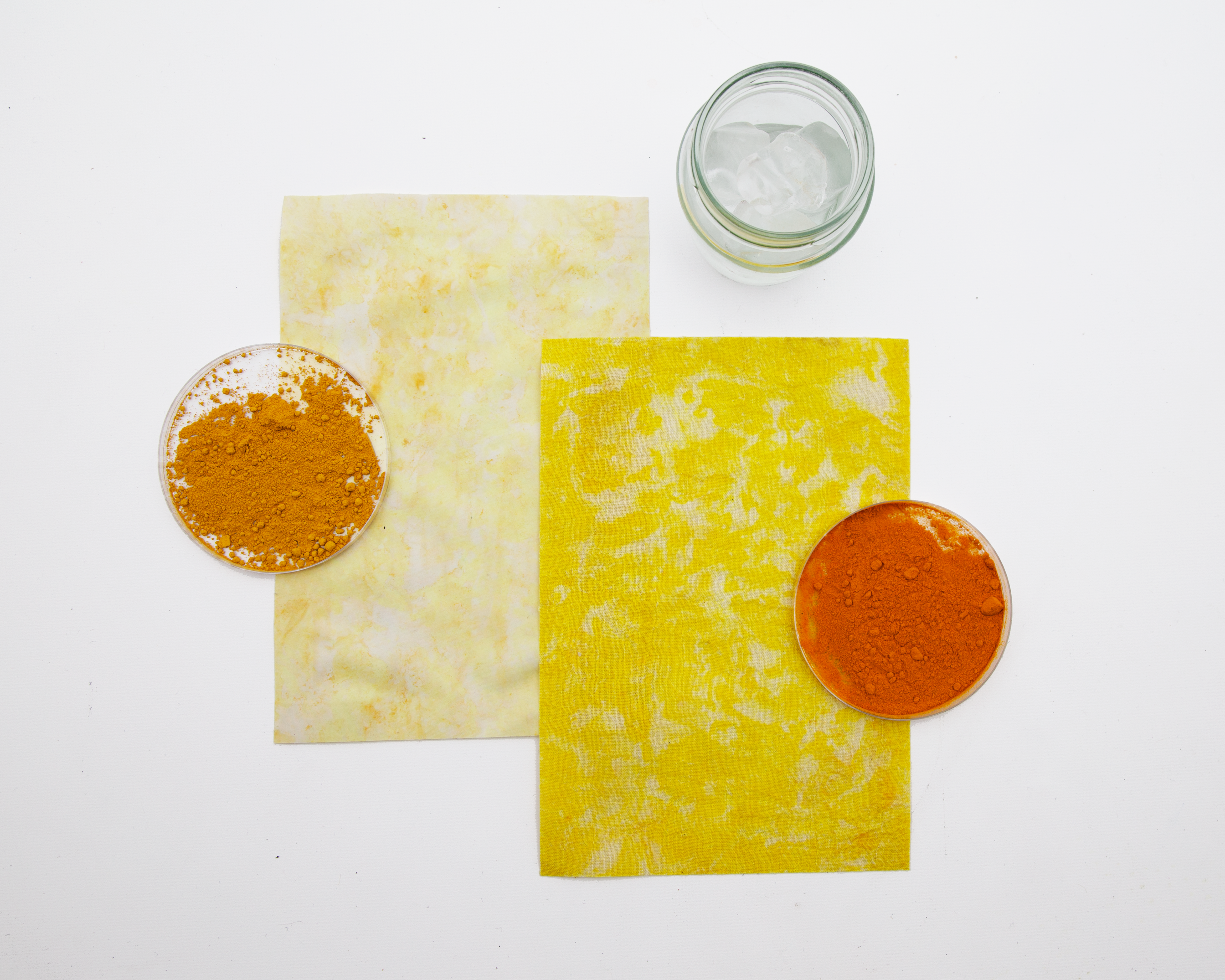
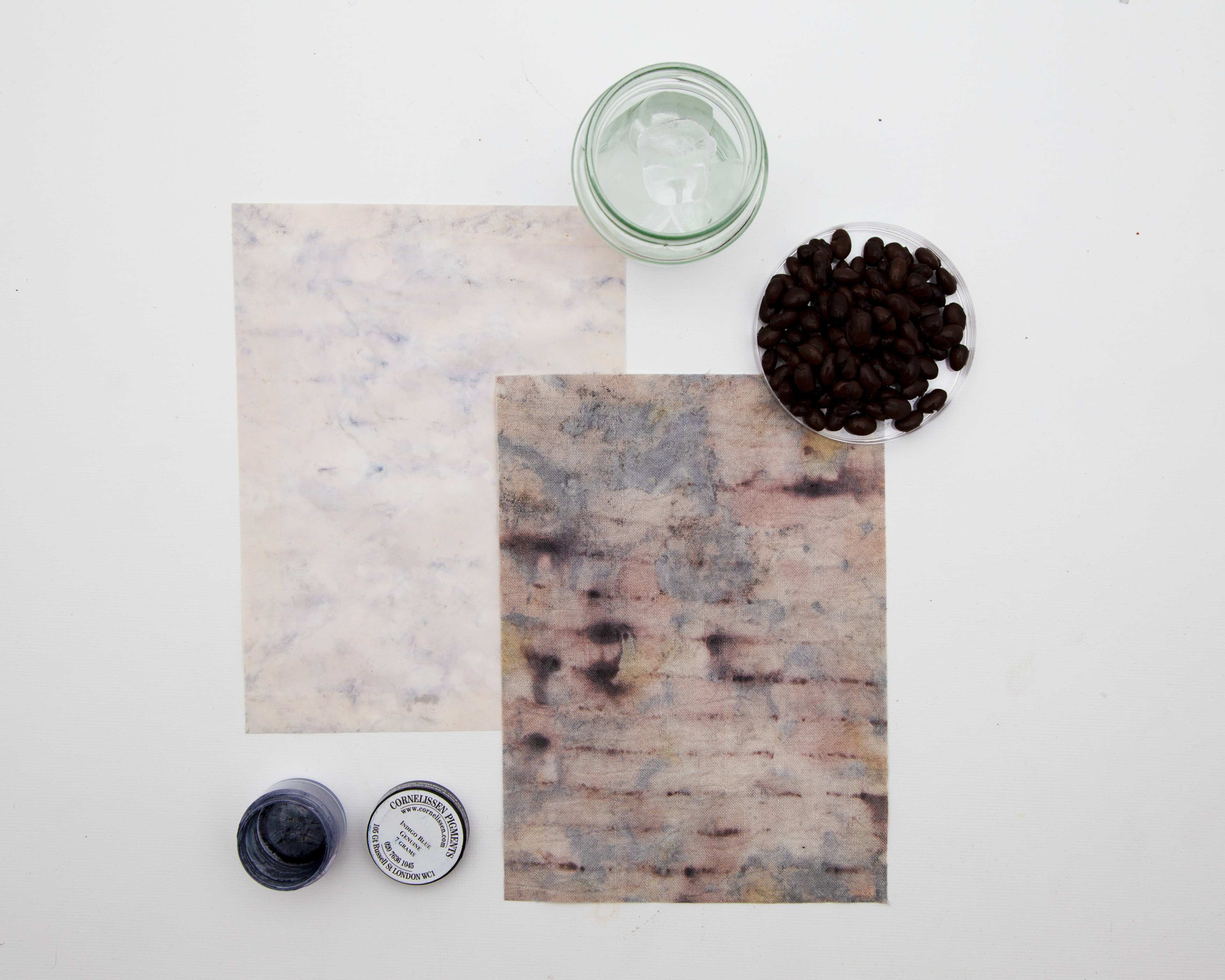
2. Bacteria dyes
This phase of the project involved lab experiments to test the growth of Janthinobacterium lividum, a bacteria producing a natural purple pigiment called violacein, on various fabrics such as viscose, cotton calico, Tyvek, and wool. Different inoculation techniques and washing methods were applied. Through steps including fabric sterilization, bacteria inoculation, and growth monitoring, a range of dyed samples was produced, showcasing diverse properties and potential applications.
Growth of bacteria on fabric samples on day 4 after inoculation
Variables involved in the experiments
Fabrics: viscose, cotton calico, tyvek, wool
Inoculation methods: paint / pipette
Autoclave methods: glass petri dish / paper bag
Washing methods: cold water / 10% salt solution / 1% sodium dodecyl sulfate
Steps followed to set up the growth experimentsFabrics: viscose, cotton calico, tyvek, wool
Inoculation methods: paint / pipette
Autoclave methods: glass petri dish / paper bag
Washing methods: cold water / 10% salt solution / 1% sodium dodecyl sulfate
1. Liquid culture preparation
2. Fabrics sterilization
3. Agar solution preparation
4. Bacteria inoculation
5. Growth over 5 days
6. Autoclaving the samples
7. Washing and drying
8. Compare results
Growth of bacteria on fabric samples: Day 0 - day 2 - day 4
Dry samples